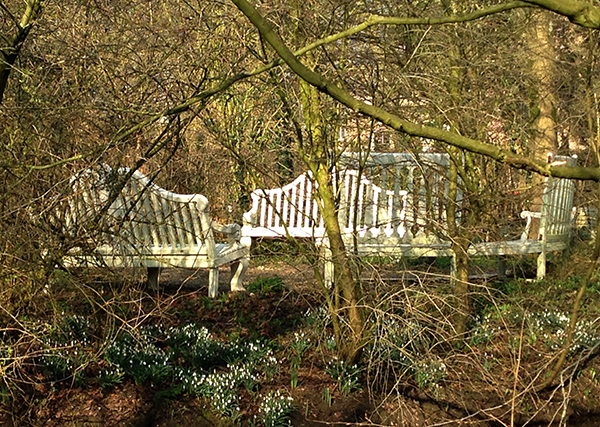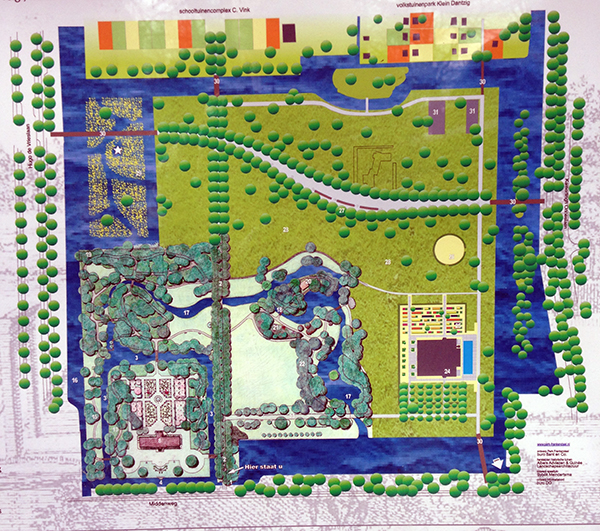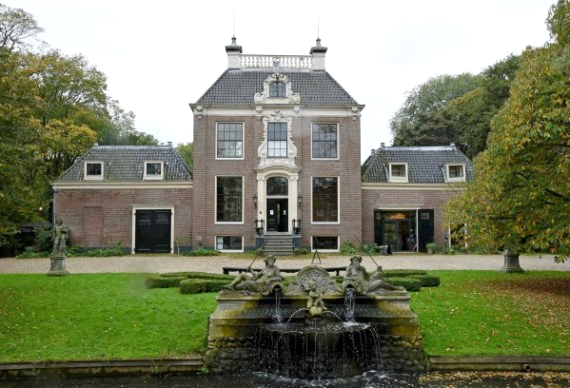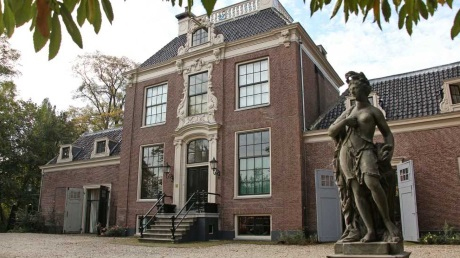'Nother try to photograph the art moghuls as icons done today. I scored an oldfashioned flashlight…
Dutch Taste
Posted by Everdien on 2/21/18 • Categorized as All posts
Went to Amsterdam to visit Frankendael. a country retreat in the heart of Amsterdam. I suspected snowdrops, and snowdrops there were.
Also (under construction) a garden in the Dutch Régence style – which I never heard of. So I did a bit of research, and found an article by Florence Hopper. One of the things she explains is that ‘Dutch Taste’ was a cussword coined by an Englishman promoting the english landscape garden. A formal garden with parterres is ‘Dutch Taste’, and anathema to the landscape afficionado’s.
The eighteenth-century style known as the Dutch Régence Style held sway in the Netherlands for only a few years, thirty at most, at the beginning of the 18th century. Thus it is overlooked by most garden history writers. Which explains why I met with it at Frankendael for the first time.
The term ‘Régence’ does not refer to a ruler who stands in for a minor, but to the Dutch ‘Regenten’ – the oligarchy who ruled the prosperous Dutch cities, and who spent their extra money on building country retreats. “The Dutch taste in gardening … represented therefore the antithesis of grandeur, and … simplicity and unity of design …” The style is more playful than the Baroque that went before, but not as overloaded as the Rococo that came after. There is a central axis, but there are subtile asymmetries. Also the useful and the ornamental are mixed – there are kitchen gardens and orchards included. In all, more emphasis on horticulture, and less on pomp and circumstance. This I recognise as typically Dutch ……

Frankendael in Watergraafsmeer is Amsterdam’s last remaining country retreat. Country retreats became popular in the sixteenth century. Whereas the aristocracy had castles and country estates, the well-to-do citizens of Amsterdam invested in large residences with opulent gardens around the outskirts of the city, along the river Amstel, for example.
Diemermeer was drained in 1629, creating a polder in the area that connected the Amstel and the Nieuwe Diep, called Watergraftsmeer. Later this was corrupted to Watergraafsmeer (‘graaf’ refers not to graves but rather to ‘graft’, an old word for canal). With a depth of five metres below NAP (normal Amsterdam level), it is one of the lowest parts of Amsterdam. In the seventeenth and eighteenth centuries, it was a popular location for country retreats. Huize Frankendael is the only one to have survived.

Gerelateerd:
-
Dutch Icons
-
Dutch Space is Different
While visiting Scotland I had the opportunity to discuss my work with Irene McAra and Joe Lockwood, both…
| « Mountains and millions | <-- previous post | next post --> | Defensive » |
|---|









